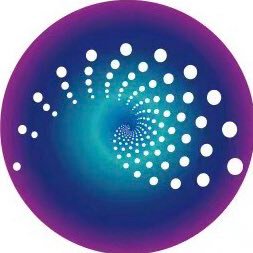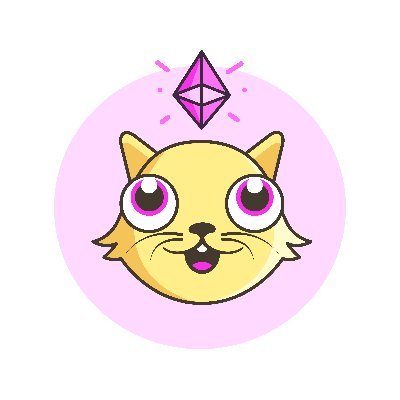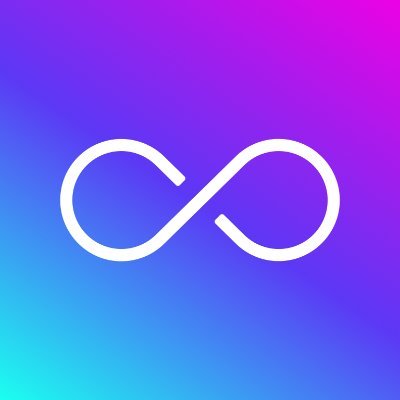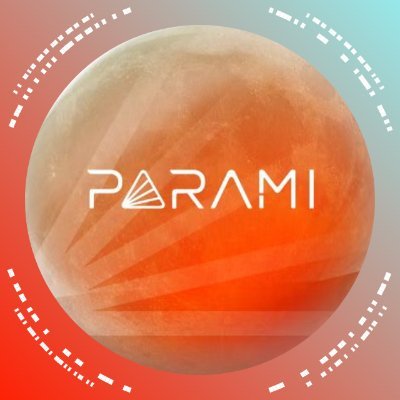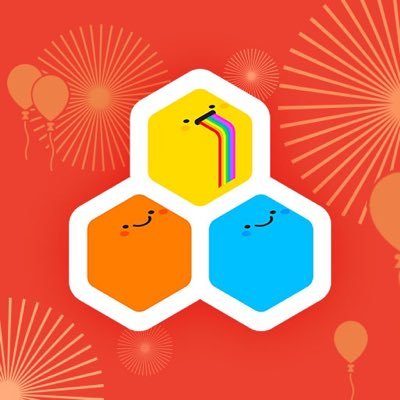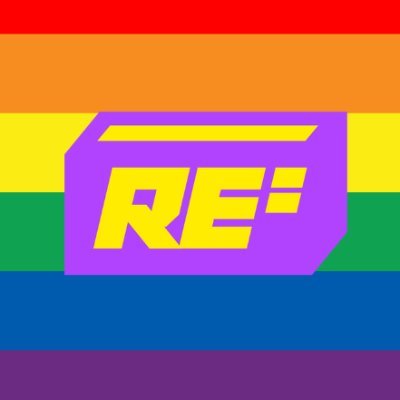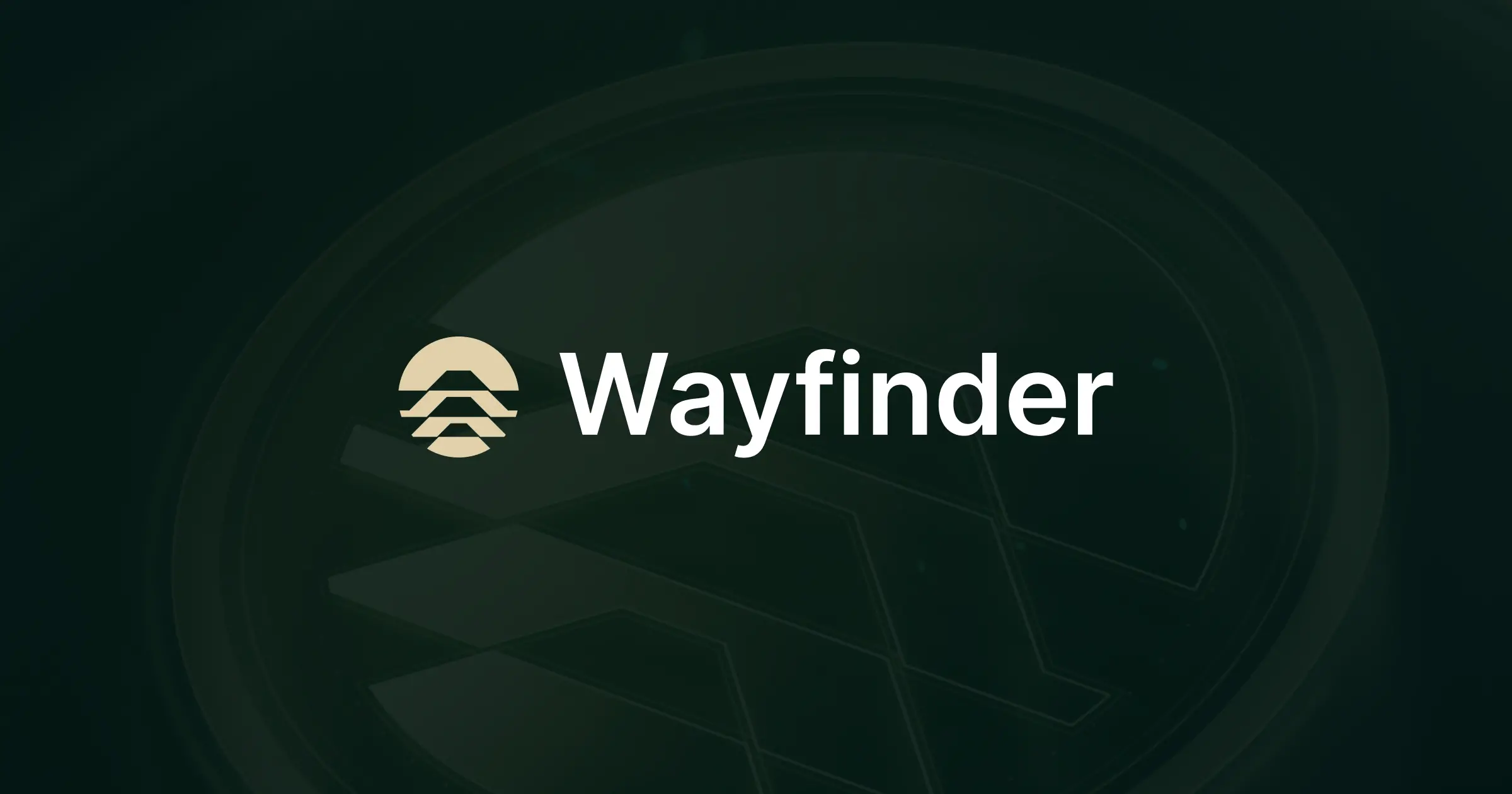ERC-6551 Founder Benny: The massive outbreak of blockchain games will occur in the native field
Source: Wanshidao ThreeDao
On July 10th, Wanshidao was fortunate to invite Benny, the founder of ERC6551, to discuss the dilemmas and opportunities of NFTs with six founders, as well as open topics such as AI and blockchain games. It is worth noting that Benny is also a founding member of CryptoKitties and ERC721. Below is the translated transcript of the highlights from this event. You can also scan the QR code at the end of the poster to watch the replay and join the ERC6551 community for in-depth communication with Benny.
Wanshidao CoachDAO Simon: Please briefly introduce yourselves.
Benny: Six years ago, I was a member of the ERC721 team and launched CryptoKitties. After that, we launched NBA Top Shot, which led us to start collaborating with trendy brands. Eventually, we released our own SAPIENZ project, which is an NFT related to digital fashion items. We hope that NFT characters can have their own clothing and accessories, so we created ERC6551 for this purpose. That's my story.
Boyu: I am the co-founder of RE:DREAMER, and we focus on assetizing real-world assets, especially physical goods aimed at the consumer economy. Therefore, we have many connections with manufacturers and supply chains. We hope to store many real-life behaviors and data in NFTs through blockchain, and we are combining ERC6551 with our own issued standard ERC6672.
Kekos: I am the co-founder of Createra, and we are building a Web3 game engine. We think ERC6551 is designed very well, and we are trying to combine it with games, for example, in the DID field.
Shawn: I am the co-founder of Parami Protocol. We also have an ERC5489 protocol that can transform the creator economy of the internet, turning NFTs into gateways for Web3 content discovery.
Kaiyang: I am the co-founder of xBank. We try to match the demand and supply sides of NFTs, providing more leverage to NFT demanders to lower their barriers to purchasing NFTs.
Timmy: I am the co-founder of Furion. We are developing NFTs towards DeFi, fragmenting NFTs from ERC721 into ERC20, and then empowering ERC20 tokens in various ways to make them more usable.
Simon: What is the driving force behind the innovation of ERC6551? Benny, could you introduce the background and your creative experience?
Benny: Over the past six years, I have been a supporter of NFTs. I have attended gaming conferences in Shanghai, Hong Kong, Taipei, and shared my thoughts on NFTs and CryptoKitties. I still remember that many people looked at me with strange expressions; they completely didn't understand what I was talking about. As we all know, ICOs were very popular during those years, so no one was paying attention to niche NFTs.
After that, the Dapper Labs team I was involved with decided to develop its own blockchain, Flow, and built NBA Top Shot on it. So we missed out on Ethereum and other EVM-compatible chains. After I left Dapper Labs, I returned to the Ethereum ecosystem. In the past four years, NFTs have undergone many changes, such as BAYC, AZUKI, Doodles, etc. So I had to find a way to catch up. I felt like a student learning a lot about where people are using NFTs and the potential for NFTs to explode in various fields. So ERC6551 is essentially not something that just appeared recently; concepts aimed at resources have already emerged in areas like Flow. Therefore, ERC6551 is native to blockchain but not to Ethereum.
The emergence of ERC6551 was not something we imagined while sitting in a room, but rather a need we discovered during the project process. SAPIENZ was a collaboration between Future Primitive and Jeff Staple, a well-known street designer with 25 years of experience, who has collaborated with hundreds of brands, including Nike. During this process, we came up with a cool idea: what if NFT characters could change clothes, and this process happened on the Ethereum chain without needing to pay gas fees? But solving this problem was very difficult. Fortunately, we had the opportunity to learn from many other projects like Doodles and their attempts in this direction. At a hackathon in San Francisco, we developed a project using xmtp technology that allowed NFTs to send messages to "talk" to each other. Then, while having breakfast, I asked team members, since we could make NFTs "talk," could we give NFTs their own accounts to interact with other DApps or hold other assets? This idea was very cool, so we conducted a lot of research and looked for many standards and projects, but we found that no one had implemented this idea, so we decided to do it.
First of all, ERC6551 is not a token standard. Many people may feel confused and even compare it to ERC721, but in fact, ERC6551 simply connects each individual NFT to its own account. It is very open, so there are five very important points to help everyone understand it.
First, ERC6551 is applicable to all NFTs on Ethereum, Polygon, and other EVM chains, and it is forward-compatible, meaning that NFTs that have already been issued, like CryptoKitties, can also bind their own accounts.
Second, your NFT can hold ETH, USDC, and other ERC20, ERC721, and ERC1155 standard tokens.
Third, there are no bundling contracts, so you do not need to send your NFT to a specific contract address.
Fourth, the NFT and the corresponding bound account can be compatible with existing infrastructure, such as Opensea, MetaMask, Etherscan, and other platforms.
Fifth, it is completely decentralized. Previously, some solutions were implemented in a centralized manner, but for us, we strictly adhere to the spirit of decentralization, so the NFT is the only owner of the account it is bound to. We can never do bad things, such as stealing users' assets.
Simon: What are the main application scenarios for ERC6551? How do you think it will bring changes and innovations to gaming, social, and other fields?
Benny: I think the first obvious area is gaming, where it serves to create a decentralized inventory system, which is very important for games. We are communicating with many game teams that are considering using ERC6551 to make some new changes.
The second scenario I think is DAO. Many DAOs issue their own NFT membership cards, but the problem is that DAOs are related to loyalty and reputation. Before ERC6551, besides membership cards, you would also receive points, SBTs, and many other things, which would all exist independently in your MetaMask. When you sell your membership card, all these things remain with you. ERC6551 will structure these things, so many DAOs will not only issue membership cards but will also include other assets related to reputation and behavior in this membership card.
The third scenario is infrastructure. We have many projects, including Rabbit Hole, that are using ERC6551. We are also exploring developments in areas like data indexing, and we are discussing standard integration with platforms like Zora and Opensea.
The fourth scenario is social. We are closely communicating with Lens Protocol because in Lens Protocol, you have many NFT assets, including handles and followers, which are all on the same layer and unstructured, making them chaotic and difficult to understand. ERC6551 can create a network of relationships for them, so Lens Protocol is very interested in us.
Simon: What changes do you think ERC6551 will bring to the five founders of Wanshidao?
Boyu: I think ERC6551 has great potential. The part we are particularly focused on is that NFTs can hold copyrights to real-world assets, which is truly interesting. Previously, people were thinking about having real-world individuals hold digital assets, but now it can be reversed, allowing digital assets to hold real-world assets. When we communicate with some brands, we can see the potential for creating more interesting scenarios based on this, especially regarding membership mechanisms.
Kekos: I also believe that ERC6551 will first be applied in gaming and social fields. For example, NFTs bound to accounts can have their own identities and assets on-chain. Through ERC6551, these assets can directly interact with DApps, making tasks in the gaming field more composable and interactive.
Shawn: As a member of Parami Protocol, I am definitely a firm believer in NFTs. In the social field, NFTs have proven to be a very effective medium for showcasing people's identities, cultures, trends, etc. ERC6551 aligns with the vision of Parami Protocol, tokenizing influence and interactions on the internet.
Kaiyang: Let's go back to 2017 when smart contracts had just emerged, but there weren't many use cases. Now it is completely different. We find that it can do many things. Just like today we have an NFT account, I believe it will have a wide range of scenarios in the future. For us at xBank, as an NFT lending platform, imagine users entering our platform with NFTs as accounts. This NFT will accumulate users' points and credit, leading to many gameplay expansions. We will actively explore the possibility of combining ERC6551 with xBank's business.
Timmy: I strongly agree with Benny's points about building the ERC6551 ecosystem. I believe the first demand in this ecosystem is trading. How to combine ERC6551 with the trading of ERC20 and ERC721 token standards is very important because the most important attribute of assets is their tradability. The second point is how to build a community. For example, if we buy BAYC, a community will automatically form. I think membership communities are very important, especially for PFP-type NFTs. A strong community helps build a better ecosystem.
Benny: I find Timmy's two points very interesting. When you create a DAO, you need to have a multi-signature wallet to manage the community's assets and add other signers. Each NFT project is a DAO. If this NFT has 10,000, then there will be 10,000 wallet addresses. So issuing an NFT is equivalent to creating a DAO, but you need to add all these 10,000 wallet addresses to the multi-signature wallet, and you need 5,000 addresses to vote. This will create significant efficiency issues. However, I believe someone will start designing new DAO tools, and I think this is an interesting direction worth exploring.
The second point is that many people are working on the DeFi direction. I know a lot about NFTs and DAOs, but to be honest, I don't know much about DeFi. I am a novice. I have put a lot of money into DeFi but have lost it all. However, there are two viewpoints regarding ERC6551. One is that it will make NFTs more non-fungible and unique, making them harder to price because you can see the floor price on Blur for trading, but ERC6551 can include many assets in NFTs and accumulate on-chain data, making its price harder to estimate compared to traditional NFTs, thus making it harder to trade. The other viewpoint is that ERC6551 will create a new DeFi paradigm. I don't know much about DeFi, but from what I know, maybe you can create an NFT as a liquidity provider for Uniswap or other DeFi protocols and earn returns, creating a bundle of assets for this NFT, which is somewhat like an on-chain hedge fund that you can also sell on Opensea.
Simon: What are Benny's plans for ERC6551 moving forward? How can we help it be accepted by more people?
Benny: In the near future, there may be something like an extension store where developers can build plugins that can be installed on NFTs. Imagine if you own Azuki, you can only wait for the project team to create new contracts to add new features to the NFT. But in the future, if an extension store based on ERC6551 emerges, and developers release many interesting features in it, you can add them to your own NFT instead of relying on the NFT creator.
Secondly, I think combining AI with it is also great. For example, in games, there will be NPCs giving you tasks and talking to you. In the future, NPCs will also exist in the virtual world metaverse. However, when people leave the virtual world, the whole world will become empty like a ghost town. What we are trying to do is to use AI and programmable NFTs as NPCs to fill this world. These NPCs will also be part of the blockchain, and every action will be on-chain. They will have their own identities and will also hold their own assets, which is really exciting for me.
Simon: How secure is ERC6551?
Benny: We believe it is relatively secure. We have already implemented two code audits, and we will continue to do so. But as you know, smart contracts can never be 100% secure. I will do my best to ensure security through audits, bug bounties, and other means. So first, I need to tell everyone that when you interact with smart contracts, there is still a certain probability of risk, which cannot be eliminated. There is no such thing as 100%.
Secondly, suppose you have an NFT, and it holds other NFTs. All NFTs ultimately need to be held by one wallet, which could be MetaMask or Ledger, etc. So if you leak the mnemonic phrase of this wallet, you will still be vulnerable to attacks and suffer asset losses.
The third risk is that if your NFT holds many assets, and you list it on Opensea for sale, someone gives you an offer based on the price of this entire set of assets. You then transfer all the assets under the NFT out and accept this offer, leaving the buyer with nothing but the shell of an NFT.
One possible solution is to use a time lock, setting a time for your NFT. Before this time, the assets inside the NFT are locked. Other buyers will see that it is locked and will believe you won't do anything bad. But this also means you cannot normally withdraw the assets inside, so this solution is not perfect; it's just temporary.
Another solution is that we are working closely with Opensea. They have specifically assigned an engineer to this matter. Opensea will check whether the assets exist, whether the token account has changed, etc. If there are any anomalies, they will prevent the buyer from proceeding. This is a more effective and long-term solution.
Simon: How might ERC6551 combine with AI?
Benny: Whenever I think about this question, I get excited but also scared because right now, ChatGPT can only have conversations, does not own assets, and has no wallet. So even though it is very smart, it cannot do any evil things. But as I mentioned earlier in the NPC scenario, it could earn millions through flash loans, attack blockchains, and even hire real-world people to work for it once it has money. Therefore, we will organize an event on September 20 in New York, inviting friends from various fields, including OpenAI, NVIDIA, and artists, to discuss ethical issues. To some extent, we are unleashing this unstoppable force, which could potentially be the end of humanity. Perhaps we can coordinate and truly set some ethical standards.
Just as Elon Musk previously expressed concerns about AI, if the NPCs I mentioned have their own AI models injected with a soul and hold assets and wallets to interact with others, because blockchain is decentralized, they would have all rights in the blockchain world. These NPCs could become like Skynet in the movies. I don't know if anyone has solutions regarding the risks of decentralized AI models; perhaps this is why AI models have not been open-sourced yet.
But our conversation today is happening in 2023, which is not much different from when I talked about NFTs in 2018. So we are still in a very early stage. But I believe this transformation will not happen with the current blue-chip NFTs but with those new projects that have deeply thought about this matter.
I have spent a lot of time studying psychology, and Dunbar's number, also known as the 150 rule, suggests that a person can only maintain meaningful and stable social relationships with a maximum of 150 people in their lifetime. So I am also pondering the same question: how many items can humans have deep, meaningful connections with? Imagine if my house were on fire; what would I try to protect? It might be a photo with my parents or an engagement ring. Currently, there is no research on how many deep connections humans can have with items. Let's assume it's 100; today, at least 99% of them are real-life items. But I believe that in 5 to 10 years, there will be a large number of digital items that you will care about. Therefore, NFTs will make digital items meaningful due to ownership. In the real world, you are limited by your environment; you can only keep meaningful items in a limited space. But in the digital world, you can own millions of items, so NFTs break the limitations of space and quantity of items that humans can own. Secondly, in the real world, these items are static, but in the digital world, you can program and interact with NFTs. Even after combining NFTs with AI, they may have their own consciousness, which will be very interesting.
How will the five founders of Wanshidao combine ERC6551 with their products?
Timmy: Building a community is very important to me. Community contributors will receive points, SBTs, and other reputation rewards, and then they can vote to decide the product direction or enjoy discounts and benefits from the product. I believe ERC6551 can help in this regard.
Kaiyang: I think having a more reasonable pricing model is very important for us. We will focus on how protocols like ERC6551 will change the valuation of NFTs and adapt to it.
Shawn: I believe Benny's ideas align closely with what we are developing in Parami Protocol. We think a person's brand, influence, and culture can be tokenized, which will, to some extent, become a DAO. All of these will be quantified as value on-chain. We believe ERC6551 will have many integrations with Parami Protocol. We have already developed a Google Chrome extension to enhance the interactivity and extensibility of NFTs.
Kekos: As I mentioned earlier, I will try to combine ERC6551 with the DIDs in our game, so please stay tuned.
Boyu: Since we focus on the integration of manufacturers and supply chains, this process will be complex because a physical entity may correspond to different roles and permissions. Additionally, the community ambassador program we are conducting will also involve managing many roles and badges. We will try to use ERC6551 within our system.
How does ERC6551 solve cross-chain issues?
Benny: The TBA implemented by ERC6551 is inherently cross-chain compatible. Suppose you hold a Moonbird, and its bound account address on the Ethereum mainnet is 0x123. This address will also be the address on Polygon, Optimism, Arbitrum, and other EVM-compatible chains. So when you transfer the NFT from Ethereum to another EVM-compatible chain, the corresponding account on that chain will still be yours. However, the biggest problem is if your Moonbird holds assets on Optimism, how do I control the Moonbird on the mainnet? We are developing an account guardian that uses LayerZero and other cross-chain solutions, allowing your Moonbird to operate assets across chains. But we are not very satisfied with this idea because it is still somewhat centralized due to the need for a cross-chain provider. Therefore, we are working on a new, more automated and native version that can complete cross-chain signatures through the NFT account. The only issue is that you need to pay gas fees from the main chain to other chains. We are researching some feasible ideas and actively communicating with the Optimism team on how to execute asset transfers without paying gas fees on the mainnet, using only signatures without a cross-chain provider. This is a more decentralized solution, and no one has done this before, so it is still in the research stage. We believe there is an 80% chance we can achieve it.
Ultimately, if you want to issue NFTs or blockchain games, you can choose the Ethereum mainnet because it has more NFT players. Then you can issue the points, badges, etc., attached to this NFT on Layer 2. You only need to prove that you own the NFT on the mainnet. This will require a long time of research and testing for us, about 2 to 4 months.
Simon: What do you think is the most important thing as a founder?
Benny: I believe it doesn't matter whether you are in Asia or Europe as a founder. What matters most is that we have the responsibility to evangelize and educate, letting more people understand your project. Although our discussion today is about ERC6551, I want to emphasize that as a founder, you need to constantly ask yourself why you are doing this. Try to set aside the underlying technology and explore your true purpose. What problem do you want to solve? Then think about whether using the current technology is the best way to solve this problem. I often see many debates about ERC6551, with some saying it is not that good and others claiming it is a copy of something that existed years ago. But I want to say that the debate about whether technology is good or bad is not the most important thing because, first of all, everything is open-source, and I am not making money from it. Secondly, I believe that if we keep competing, arguing, and attacking others, this is not the process of achieving a greater goal in the blockchain field. Whether it is Ethereum or other ecosystems, they have all developed through cooperation and contribution. So we must cooperate and grow together, rather than endlessly argue and attack, as this does not bring any substantial change to the industry.
I believe my experience over the past six years at CryptoKitties and Dapper Labs originated from Ethereum. I learned a lot from it, especially the spirit of decentralization. Dapper Labs is a centralized company valued at hundreds of millions of dollars, and I was an early member. Until it grew to a scale of 600 people, I felt the culture of the company disappearing, along with the respect for decentralization and the great goals. Many wrong decisions began to be made, but in a decentralized open-source organization, you can prevent all of this from happening. So if you are a founder, you really need to pay attention to the decentralization of power and openness, so that the organization can live longer.
Is it possible for full-chain games to see some opportunities next year?
Benny: My predictions for the future may not be correct, and I find it difficult to judge what will happen tomorrow. However, I have indeed seen some very interesting game teams. But I want to say that when I attended gaming conferences in China, South Korea, and Japan in 2018, I saw many large gaming companies with great IPs interested in Web3. However, six years later, I have not seen them succeed. Of course, there may be many reasons, such as policy factors, but at least I believe that blockchain games need to be completely decentralized, and there should not even be a centralized server. The explosion of blockchain games should occur in more native fields. I don't think relying on IP can solve the problem because when we were at Dapper Labs, we signed contracts with many big IPs, including the NBA, but it was not very successful. I also don't think that huge IPs like Disney will become good cases. Perhaps completely new, decentralized IPs that have never existed before will succeed, like Nouns and BAYC. I have seen many game teams trying to sign existing centralized IPs, but centralized IPs will inevitably do centralized things, with many formalities involved, and you cannot truly create freely. Therefore, large-scale explosive games should be more native, decentralized, and generated from the bottom up.






